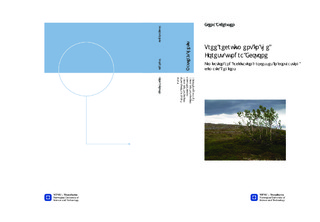| dc.description.abstract | Aim: The aim of this study was to analyse how abiotic and biotic constraint and facilitation agents determine tree recruitment in the alpine zone in climatically different regions as well as across species; Birch, pine and spruce. Location: The study was located to Grødalen, Haltdalen and Røros representing a coastal-inland gradient, where birch was included along the entire climatic gradient and all three species in one region (Haltdalen). Methods: Variables collected for seedling/sapling (specimen <2m) locations and associated control locations were; surrounding vegetation layers at ground-, field- and shrub level, occurrence and tyoe of shelter, soil samples, topography (land cover and slope position) and plant measurements (height, base diameter, crown area and age; Not recorded for control locations). Statistical analyses consisted of ANOVA and chi-squared tests were used to compare across regions and among variables. Results: The occurrence of shelter (shrub, depression and boulder) and moist location characteristics such as dominance of bryophytes, facilitated seedling recruitment equally across all regions and species. Shrub shelters and high amounts of organic material in the soil only facilitated birch height growth in the drier regions. Benefits from surrounding vegetation positively influenced the growth and survival of birch seedlings/saplings in drier regions. Dwarf shrub vegetation and shrub shelters increase moisture availability in the soil and provide shelter from wind scouring. Yet, dwarf shrub vegetation did not show any influence on height growth and survival for pine and spruce. In addition, pine recruitment was less affected by shelter presence and moist location characteristics than birch and spruce. Conclusions: This study demonstrates that there is an interplay of regional and local facilitation agents effecting seedling recruitment and that these agents vary across species. This complicates production of general predictions regarding future response of tree recruitment to changing climate. Identifying relevant facilitation agents supplies the necessary building blocks for estimating the potential for further recruitment and growth of seedlings and saplings into the tundra environment. | nb_NO |

